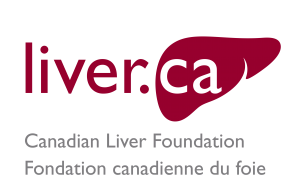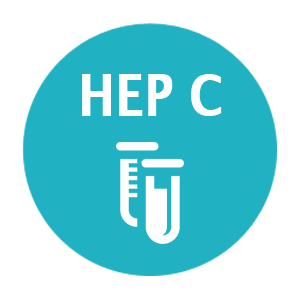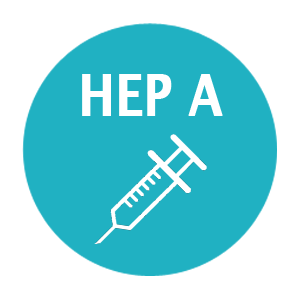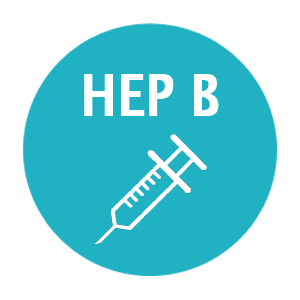Advocate

Be a champion for liver health.
Research continues to lead to exciting breakthroughs in the diagnosis and treatment of liver disease. Despite this, some patients may have difficulty benefiting from this research
1 in 4 Canadians may be affected by liver disease. The silence surrounding liver disease is taking a devastating toll on liver healthcare in this country. As a patient, family member, physician, nurse or allied health professional, you can help change the future by lending your voice and getting involved by:
- dispelling misconceptions about liver disease;
- sharing the impact liver disease can have on individuals and families;
- emphasizing the importance of liver health and encouraging people to get tested;
- helping influence government policy governing access to care and treatment for patients.
To learn about specific advocacy initiatives, connect with us by clicking one of the links below to fill out a form and we will follow up with information on the CLF’s advocacy efforts and how you can get involved. Speak up for liver health!
Our Position
The Canadian Liver Foundation’s advocacy efforts seek to ensure that patients have equal and affordable access to the most effective treatments regardless of their income or where they live. We have successfully advocated for new hepatitis C drug therapies for use in Canada and are continuing to push provincial governments to provide access to these treatments to patients in their regions.
We strive to improve prevention of liver disease and to enhance the quality of life of those living with liver disease by also advocating for better screening and access to patient care. We do this by working with federal, provincial and municipal governments, community organizations and individuals to raise awareness of liver-related issues and to push for policy changes.
The following are some key issues related to liver health and where we stand on them:
![]() Alcohol
Alcohol
The Canadian Liver Foundation supports the level of alcohol consumption proposed in Canada’s Low Risk Alcohol Drinking Guidelines:
- 10 drinks a week for women with no more than 2 drinks a day;
- 15 drinks a week for men, with no more than 3 drinks a day.
The Canadian Liver Foundation also recommends that the following people should avoid alcohol completely:
- People with liver disease, as determined by a doctor
- People taking medication – prescription or over-the-counter
- Pregnant women or nursing mothers
Alcohol consumption is very much part of everyday life. There are health benefits to alcohol consumption, but there are also health hazards to excessive alcohol consumption. One drink of alcohol a day decreases the risk of heart disease. However, more than 3 drinks a day for men or 2 drinks a day for women increases the risk of liver disease. Differences in the way alcohol is metabolized by the body are influenced by factors such as age, gender, body weight and genetic factors. People with impaired liver function due to many different causes of liver disease are at higher risk of additional damage due to alcohol. Therefore there is no reliable way to determine how much alcohol is ‘safe’ for an individual.
Alcohol can also interact with medications, particularly acetaminophen (Tylenol® and other medications) to cause serious and even fatal liver injury.
![]() Acetaminophen
Acetaminophen
Acetaminophen is one of the most popular pain relievers in North America and is the leading cause of acute liver failure. The Canadian Liver Foundation supports the introduction of warning labels on all products containing acetaminophen, advising people of the dangers of overdose when combining these products. The CLF also recommends that elementary, high school and university students receive education regarding the risks of combining acetaminophen and alcohol.
Acetaminophen is an analgesic sold as a stand-alone pain reliever (Tylenol®) and as an ingredient in hundreds of prescription and over-the-counter products. Acetaminophen is generally a safe analgesic as long as recommended dosing guidelines are followed. Unfortunately as many medications contain acetaminophen, accidental overdoses are relatively common, particularly in children. Children are especially vulnerable because overdose can occur at lower doses of acetaminophen than for adults. Parents attempting to alleviate their children’s symptoms may inadvertently give their children adult dosages or too many doses of a medication containing acetaminophen within too short a period of time. Combining acetaminophen with alcohol can also lead to liver failure.
For liver disease patients, acetaminophen is the recommended pain reliever because it does not carry the same risk of ulcers or bleeding as pain relievers such as aspirin. Acetaminophen is safe for liver disease patients as long as recommended doses are not exceeded.
Accidental acetaminophen overdoses are responsible for many hospital admissions and even deaths among both children and adults. It is therefore important to take whatever steps are possible to reduce this risk.
![]() Hepatitis C Testing
Hepatitis C Testing
More than 300,000 people in Canada are living with chronic hepatitis C but as many as 44% are not aware that they have it. Since chronic hepatitis C causes no symptoms until it has destroyed much of the liver, those who are infected often are not diagnosed until the disease has reached an advanced stage. Left undiagnosed and untreated, chronic hepatitis C can lead to cirrhosis, liver cancer or liver failure. Currently, hepatitis C is the leading indication for liver transplant in Canada
The Canadian Liver Foundation recommends that all adults born between 1945 and 1975 undergo a test for hepatitis C. In Canada, chronic hepatitis C is most prevalent within this age group but risk-based testing has not been effective in identifying all infected adults. As the hepatitis C virus can be transmitted via any blood-to-blood contact and many adults are unaware of their own risk factors, age-based testing (in addition to risk-based) has a much higher probability of identifying those who contracted hepatitis C and have been living with it for many years.
Until now, the hepatitis C antibody test was recommended for individuals with recognized risk factors including injection drug use (even a single episode), blood transfusions or use of blood products prior to 1990 or participation in medical procedures or immunization in countries where hepatitis C is common. Risk-based testing has not been widespread and patients continue to be diagnosed by ‘accident’. Unfortunately when risk-based testing has been adopted, risk factor recognition by patients or doctors is poor and as a result the diagnosis is only made when symptoms of advanced liver injury begin to appear.
In August 2012, the U.S. Centers for Disease Control issued its recommendation that all adults born between 1945 and 1965 should have a one-time hepatitis C test. Based on the prevalence data in Canada and taking into account immigration from countries where hepatitis C is endemic, the CLF believes it would be prudent to expand the age bracket for testing to all adults born between 1945 and 1975. The hepatitis C antibody test is inexpensive and is covered by all provincial health care plans. Since early identification and intervention are critical to the effective treatment of hepatitis C, widespread screening of the adult population is warranted.
![]() Hepatitis A Immunization
Hepatitis A Immunization
Hepatitis A is a potentially serious liver disease that can vary in severity from a mild flu-like illness lasting a few days to a prolonged illness requiring hospitalization. It is difficult to avoid inadvertent exposure to the hepatitis A virus. Exposure can occur as a result of contaminated food, water or food handling/preparation by someone infected by the hepatitis A virus.
The CLF recommends that all Canadians be vaccinated against hepatitis A in order to reduce the incidence of this preventable illness.
The following groups have a higher than average risk of contracting, transmitting and/or suffering complications from the hepatitis A virus:
- travellers to high risk areas, such as Mexico, Caribbean, Africa, Asia, Latin America and eastern Europe, where hepatitis A is endemic
- food handlers
- daycare workers
- adults, particularly those of middle age, who travel to high risk areas
- anyone with chronic liver disease
- Canadian-born children of immigrants from countries where hepatitis A is endemic
Vaccination is the most effective way to protect against hepatitis A.
![]() Hepatitis B Immunization
Hepatitis B Immunization
Chronic hepatitis B is a serious liver disease that affects up to half a million people in Canada. The highest risk for acquiring chronic hepatitis B is in infancy and early childhood – an estimated 90% of newborns infected with hepatitis B will be infected for life.
Currently, provinces and territories have inconsistent vaccination programs – some vaccinate elementary school children while others vaccinate infants. The Canadian Liver Foundation supports universal neonatal vaccination against hepatitis B for all provinces in Canada, and urges the provincial governments to harmonize vaccination schedules across the country, so that children do not slip through the cracks as they move with their parents from province to province.
Infection at an older age carries a much lower risk for life-long infection (about 1%), and in most cases the patient recovers completely. Untreated chronic hepatitis B will cause premature death from liver failure and liver cancer in up to 20% of those who have the disease. Although the risk of these outcomes can be reduced with treatment in adulthood, treatment is expensive and may be required for life and is not as effective as prevention of hepatitis B in the first place.
Canada provides universal vaccination against hepatitis B, but in most provinces the vaccine is provided to adolescents, rather than neonates, who have the highest risk of developing chronic disease. No two provincial vaccination schedules are the same. Thus, a child born in a province that provides only adolescent vaccination that moves subsequently to a province that provides only neonatal vaccination will not be vaccinated all.
Almost all countries that provide universal hepatitis B vaccination for their populations provide vaccine to newborns. The strategy is recommended by the World Health Organization, and in Canada is the strategy that is recommended by all the professional medical associations that deal with this issue, including the Canadian Pediatric Association, The Canadian Association of Medical Microbiology and Infectious Disease, and the Canadian Association for Study of the Liver.
![]() Liver Cancer Screening
Liver Cancer Screening
Liver cancer is one of the fastest rising and deadliest forms of cancer in Canada. The major causes are hepatitis B, hepatitis C and non-alcoholic fatty liver disease. There are government-sponsored screening programs for breast, colon and cervical cancer, but no government screening programs for liver cancer.
The Canadian Liver Foundation recommends that all patients with cirrhosis and those with hepatitis B at risk for liver cancer should be screened with ultrasound every 6 months to allow for early detection, treatment and possibly cure of this otherwise deadly cancer. The Canadian Liver Foundation calls on all Provincial Ministries of Health to develop screening programs similar to those for breast cancer, colon cancer or cervical cancer. Units providing ultrasound screening should be accredited.
The risk of developing liver cancer in patients with cirrhosis and in some patients with chronic hepatitis B is between 3-8%/year. This greatly exceeds the risk of breast cancer in women, the risk of colon cancer in the general population, and the risk of cervical cancer in the general population. There are government-sponsored screening programs for breast, colon and cervical cancer, but no government screening programs for liver cancer.
Liver cancer screening has been shown in a large randomized controlled trial to reduce mortality from the disease by 37%. It is likely that even better reductions in mortality could be achieved with newer radiological tests and active intervention. Liver cancer has gone from a virtually universally fatal disease about 10 years ago, to one which is largely curable, but this can only be achieved by regular screening and early detection of tumours.
![]() Liver Tests
Liver Tests
Liver disease is difficult to diagnose because symptoms may be vague, easily confused with other health conditions or even non-existent. When diagnosed early however, many forms of liver disease can be treated or even reversed.
Liver enzyme tests – alanine aminotransferase (ALT) and aspartate aminotransferase (AST) are the most commonly used blood tests to determine the health of the liver.
The Canadian Liver Foundation recommends that liver enzyme tests be included in the regimen of blood tests that are part of an annual physical. If the levels of AST or ALT are elevated, additional testing to determine an explanation for the elevation is required. Abnormal liver enzyme tests should never be ignored. Not all abnormal liver tests will require treatment for the underlying liver disease, but all abnormal liver tests, even minimally abnormal tests require an explanation.
These are sensitive tests of liver injury. Normally found in liver cells, ALT and AST leak out of liver cells and into the blood when the liver cells are damaged. ALT is considered to be the more effective indicator of liver damage as AST is also found in other organs such as the heart and other muscles.
Non-alcoholic liver disease and viral hepatitis are common and are increasing in prevalence. These diseases may affect more than 10% of the population. Since early identification and intervention are critical to the effective treatment of liver disease, routine screening of the adult population is warranted.
“The scary thing is this can happen to anyone. My disease is not caught, transmitted or created by lifestyle choices but no one knows what causes it. I’m lucky that my disease is being controlled by medication but there are thousands of others who aren’t so lucky” – Carrie, CLF Volunteer and patient living with chronic autoimmune hepatitis.
Contact us today to learn more about our advocacy initiatives and how you can get involved.









